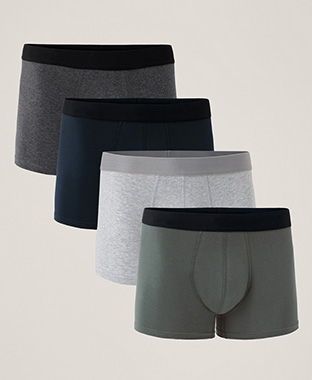Men’s underwear has played a crucial role in fashion and personal comfort for centuries. From basic loincloths to today’s high-tech fabrics, the evolution of men’s underwear reflects changes in culture, technology, and style. This article explores the history of underwear fashion, the types of men’s underwear, and how sustainability is shaping the industry.
Ancient Times: The Origins of Men’s Underwear
The earliest form of men’s underwear history dates back to ancient civilizations. In Egypt, men wore linen loincloths called “shendyts,” while the Romans and Greeks preferred subligacula, simple fabric coverings worn under tunics. These garments provided basic protection and modesty.
The Middle Ages: The Rise of Braies
During the Middle Ages (5th to 15th centuries), men adopted braies, loose-fitting linen undergarments secured with drawstrings. As the evolution of men’s underwear continued, braies became shorter, often paired with chausses, tight-fitting leg coverings worn under tunics.

The Renaissance and 18th Century: Breeches and Refinement
By the Renaissance, men’s underwear had become more tailored. Braies shortened further, making way for breeches, often made of silk or linen and adorned with embroidery. Hygiene awareness led to the introduction of undershirts to absorb sweat.
The 19th Century: Long Underwear and Industrial Advancements
The Industrial Revolution revolutionized men’s underwear history, introducing long underwear or union suits. Made of wool or cotton, these one-piece garments provided warmth and were widely worn by laborers.
The 20th Century: Boxer Shorts vs Briefs Debate
The 1900s saw a dramatic shift in the history of underwear fashion with the introduction of boxer shorts and briefs. In 1925, Everlast introduced the first modern boxer shorts, while Jockey launched briefs in 1934, providing better support. This sparked the enduring debate of boxer shorts vs briefs, each offering different comfort and style benefits.
The Late 20th Century: Designer Underwear and Performance Fabrics
By the 1970s and 1980s, san xuat quan lot nam kg garment became a fashion statement. Calvin Klein and other brands popularized stylish, branded waistbands. The 1990s introduced boxer briefs, a hybrid offering the support of briefs with the comfort of boxers, further diversifying the types of men’s underwear available.
The 21st Century: Sustainable Men’s Underwear
In recent years, sustainability has reshaped men’s underwear history. Brands are using organic cotton, bamboo fibers, and recycled fabrics to create sustainable men’s underwear. High-tech materials with anti-microbial properties and moisture-wicking capabilities ensure superior comfort.
Conclusion
From ancient times to modern innovations, the evolution of men’s underwear continues to reflect technological advancements and fashion trends. Whether it’s boxer shorts vs briefs, designer styles, or sustainable men’s underwear, men today have more choices than ever. As the industry moves forward, we can expect even more comfort, style, and eco-friendly solutions in men’s underwear history.
